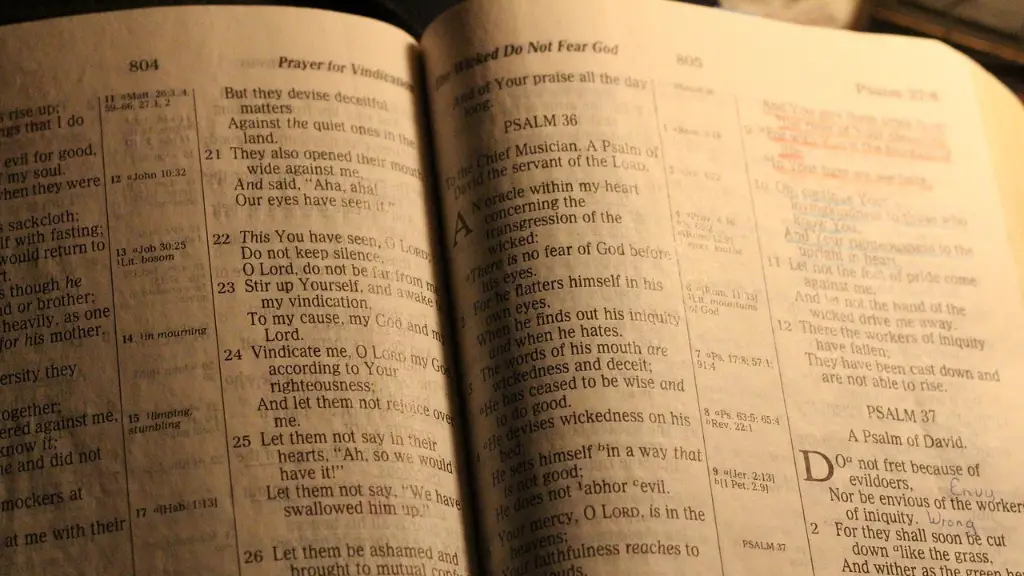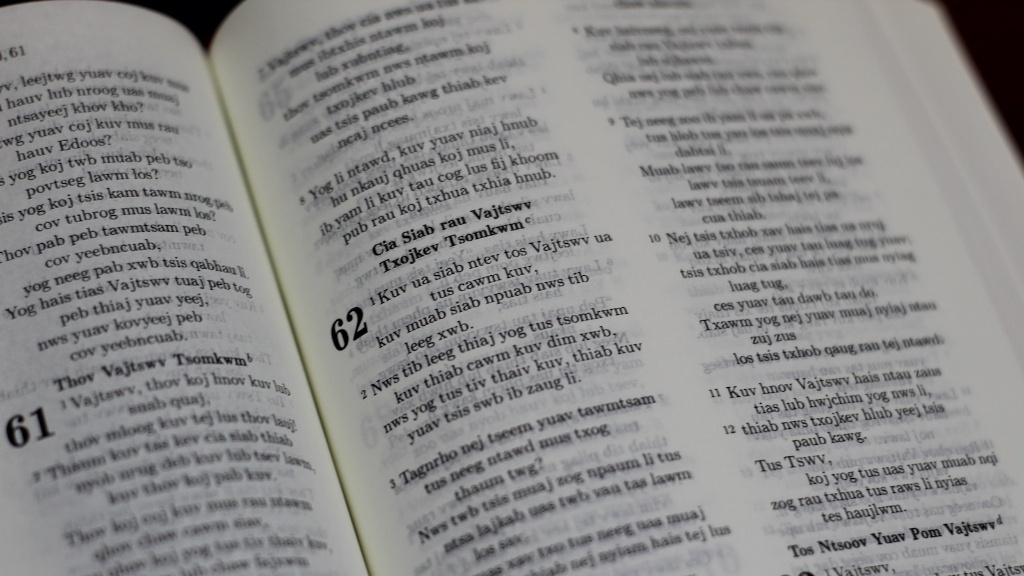The Bible is one of the most influential books in history, yet when exactly did it become canonized or accepted as scripture? Since the Bible encompasses various texts from dozens of authors over thousands of years, the process of canonization is difficult to pinpoint. The canonization of the Bible was the work of several councils, generals, kings and philosophical groups, all of whom came to the same conclusion that their particular collection of writings are the inspired word of God.
The first group to attempt the compilation of the Bible was the Sadducees and Pharisees in the days of Ezra, between 400 and 450 BCE. As a result of their efforts, they divided the Old Testament canon into three major parts. The Torah, the first five books of Moses, is viewed by some as the earliest collection of canonical scriptures. This has been further reinforced by the phrase “closed the canon” which appears at the end of the book of Deuteronomy. By the time of Ezra, however, the earlier prophets had already been accepted as authoritative.
Following the destruction of the Second Temple in 70 CE, the rabbinical school at Yavneh began a process known as the Council of Jamnia, where the body of literature which came to be universally accepted as the Jewish Bible – legal, prophetic and poetic – was established. Although never proclaimed as a formal decision, the texts mentioned in the Dead Sea Scrolls are largely the same as in the Masoretic text, which was an authoritative compilation of the Hebrew Bible from around 1000 CE.
In addition to the councils of the Jews, several councils of the early Church played a major role in the canonization process. Many of the earliest church Fathers were heavily influenced by the Old Testament, which they viewed as the Word of God. The Council of Rome in 382 CE officially recognized the current 27 books as the approved books of the New Testament, while the Council of Hippo in 393 CE canonized the same list. This list eventually became the accepted standard for the Western Church. The Alexandrian Church accepted a slightly different collection, which included the apocryphal books of the Old Testament, but as a result of the population numbers of the Roman Empire, the Western canon came to be the standard.
Although it was never officially declared, there were other influences that aided in the process of canonization. The Patristic writers of the first four centuries, such as St. Augustine, openly praised the books that still form the Bible today. Additionally, the importance of the scriptures was held in high regard by early emperors such as Constantine and Julian, who held that canonical writings should be respected. Emperor Constantine even called for the world’s first Bible – the Codex Sinaiticus – to be copied and distributed throughout his realm.
All of these factors laid the groundwork for the canonization process. Over time, a body of literature evolved which became known as the Bible. This includes the 66 books that form the Protestant Bible, the 73 books in the Catholic Bible and the 78 books of the Orthodox Bible. This incredible collection of texts carries immense cultural, spiritual and historical significance, and has endured through many generations and civilizations.
What Is the Origin of the Bible?
The origin of the Bible is largely unknown, with many scholars positing that the earliest pieces of scripture come from a variety of sources, comprising both oral and written traditions, dating back centuries before the established canon. The Bible was composed by many authors- with editing and refinement over countless centuries – ranging from those of unknown identity to those with clear identities such as Moses.
For example, while the first two books of the Hebrew Bible (Genesis and Exodus) were traditionally attributed to Moses, some scholars suggest these were derived from other authors in an ancient oral tradition. In the 10th century BCE, a mysterious figure called J, which possibly referred to the ancient Jewish kingdom of Judah, compiled other books of the Bible such as parts of the Book of Joshua, Judges, and Samuel. While the exact authors of many books remain unknown, evidence suggests that the earliest pieces of scripture are very old.
In addition to traditional authorship, many of the books in the Old Testament have been attributed to collectives of people. This includes the series of books known as the Deuteronomistic history, which covers much of the narrative of the Israelites following the Exodus, and is believed to have been compiled by a variety of authors and editors during the 7th and 5th centuries BCE. Similarly, the prophet Isaiah is believed to be the work of multiple authors who were part of the same school, known as the school of Isaiah.
As for the New Testament, many of the Gospels were composed under the guidance, or at least with the heavy influence, of the Apostle Paul. This includes works such as Matthew, Mark, and John, which were produced between the years 45–90 CE. While it’s difficult to trace the precise authors of each text, there is evidence that these books and other New Testament writings had been accepted by a wide portion of the early Christian church by the late 4th century.
What Is The Origin Of Canonization?
The origin of canonization is largely attributed to the efforts of the early church to define which texts were to be considered authoritative scripture and which were to be excluded. This process likely began shortly after the death of Jesus and was heavily influenced by the belief held by early Christians that their writings were inspired by the Holy Spirit. As a result, proto-canonical texts – such as the gospels of Matthew, Mark, Luke and John – were circulated among the early followers of Jesus, some of which were accepted in localized churches before the established canon was proclaimed
The first known written record of a body of canonical writings comes from the writings of the second-century bishop Irenaeus, who affirmed the four gospels as the only inspired scripture. Moving forward in time, a process of selecting and refining books from various authors and sources arose, leading to the emergence of the books that form the Bible today. Numerous councils and church leaders – including Athanasius, Hilary of Poitiers, Cyril of Jerusalem, the Council of Hippo in 393 AD, and the Council of Carthage in 397 AD- discussed and affirmed the books of the Bible, which began to form the accepted canon.
In some cases, the decision of which books to include – or not include – in the Bible was heavily contested. This is particularly true with regards to books that were considered apocryphal, or of dubious origins. One such example was the Letter of Barnabas, which was accepted by some early church fathers, but ultimately not included in the New Testament. Similarly, certain books that were accepted by certain regional churches in early history, such as the Apostolic Constitutions, eventually failed to gain universal acceptance.
What Impact Does Canonization Have?
The process of canonization has had an immense impact on the world. Not only has it ensured that there is an authoritative collection of scriptures, viewed by many as the inspired word of God, but it has also had a major influence on how cultures adhere to social norms, laws, and ethics.
In the Christian world, the Bible is seen by many as the foundation of moral law and truth, with many of its teachings reflected in doctrines and practices throughout the religion. In the Jewish faith, it is still viewed as a major source of moral instruction and law, serving as the root of the Talmud. Saint Thomas Aquinas, one of the most influential figures in medieval Christian thought, declared that without a canon of scripture, humans would find it impossible to know the will of God.
In addition, canonization has helped to shape history. Books of the Bible such as Exodus, Joshua and Judges have been used as rallying points for similar nations and peoples throughout the centuries, unifying different cultures under the banner of a shared faith. For example, British author and historian Peter Ackroyd argued that the Bible remains “the basis of civil society and government” in the United States.
Furthermore, the canonization of scripture to create the Bible has served to preserve social memory and the history of past cultures. Ancient societies relied on oral transmission of their traditions and stories, yet the establishment of the Bible ensured such narratives were remembered and revered, forming a major part of modern culture.
What Is the Significance of Canonization?
The process of canonization has immense significance, as it established a set collection of texts which could be considered the inspired word of God. One of the most important outcomes of this process was the creation of a unified system of beliefs, which has served to bring together geographically and culturally diverse people under the common doctrine of a specific religion.
The acceptance of a single Bible, viewed by many as the true and inspired word of God, meant that a single set of moral teachings and laws could be shared by all who read it. This served to both standardize religious thought and behavior, creating a comprehensive source of spiritual guidance.
The development of the Bible has also been integral in ensuring that many religious teachings have endured over time and were not forgotten. Ancient stories and spiritual writings have been passed down through generations due to the canonization process and the Bible has proven to be a timeless source of encouragement and inspiration.
In addition, the canonization of the Bible has been an essential tool in the propagation of faith. Its teachings and messages have been shared all over the world, with many people looking to it for answers and guidance. This is why, after thousands of years, it remains one of the greatest books of all time.
What Is Involved in Canonization?
The process of canonization involves the selection and exclusion of certain books from a larger body of literature, to form a set collection of texts which are viewed as authoritative scripture. This is done by different religious groups and councils, who independently decide which books should, or should not be a part of their faith’s collection of sacred books.
The process of canonization occurs whenever a certain collection of literature is being discussed and considered for inclusion as a part of a specific religion. During this process, different groups discuss the merits and shortcomings of each book, debating whether or not it should be included. It is only when a group agrees unanimously on the selection of books, and the exclusion of others, that the canonization process is complete.
The canonization process is often a very strenuous one, involving difficult decisions on the part of religious leaders, who have to determine which books are important and which are not. While there are no clear answers or methods on how to go about the canonization process, it usually involves the collective agreement of a group of people on which books should be included as part of their religion’s accepted scriptures.
What Are the Criticisms of Canonization?
The process of canonization has been met with critique and theory for centuries. One of the most prolific of these theories is that the process was heavily driven by political, cultural and social agendas, rather than by religious conviction. This is particularly true with regards to the canonization of the New Testament, which was significantly influenced by the social and political dynamics of 4th century Rome.
Some historians have argued that the New Testament





